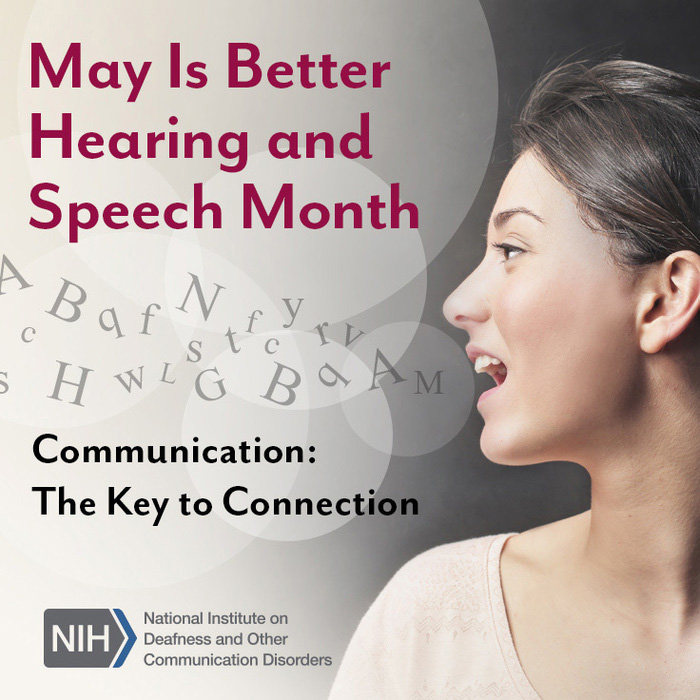
Click on the image or on this link-sharing page to use our social media sharing tools or embed the image in your website or blog. A Spanish-language version of this image is also available.
Approximately 46 million Americans experience some form of communication disorder. Communication disorders can compromise physical and emotional health and affect the social, educational, vocational, and recreational aspects of life.
To raise awareness about communication disorders, the National Institute on Deafness and Other Communication Disorders (NIDCD) joins the American Speech-Language-Hearing Association (ASHA) in observing Better Hearing and Speech Month each May. The NIDCD, ASHA, and many allied organizations educate the public about communication disorders, treatments, and current research that can improve the lives of those with hearing loss or with voice, speech, or language disorders. This year’s Better Hearing and Speech Month theme is “Communication: The Key to Connection.”
Approximately 15 percent of American adults, or 37.5 million people, report some degree of hearing loss. Hearing loss can lead to feelings of isolation and a lack of connection with family, friends, and community. Assistive devices such as hearing aids can significantly improve quality of life, yet only about one in four of those who could benefit from hearing aids has ever used them.
To help address this important public health issue, the NIDCD supports innovative clinical and translational research initiatives to lay the foundation for improving accessible and affordable hearing health care. Projects include identifying and addressing barriers to hearing health care, assessing new service delivery and screening models, and reducing disparities in access. As of April 2017, the NIDCD supports 18 active research projects on accessible and affordable hearing health care. Above all, the NIDCD encourages those who think they may have hearing loss to seek advice from a health care professional.
The NIDCD provides science-based health information on many communication disorders, including our Better Hearing and Speech Month shareable image (also available in a Spanish-language version). We encourage you to use and share our information this May and beyond, and help raise awareness that communication disorders are treatable.
Select NIDCD resources on hearing and hearing loss:
- Age-related hearing loss
- Do you need a hearing test?
- It's a Noisy Planet. Protect Their Hearing.®
- Noise-induced hearing loss
- Who can I turn to for help with my hearing loss?
For more information on voice, speech, and language disorders and other conditions that affect communication, visit the health information section of the NIDCD website.

